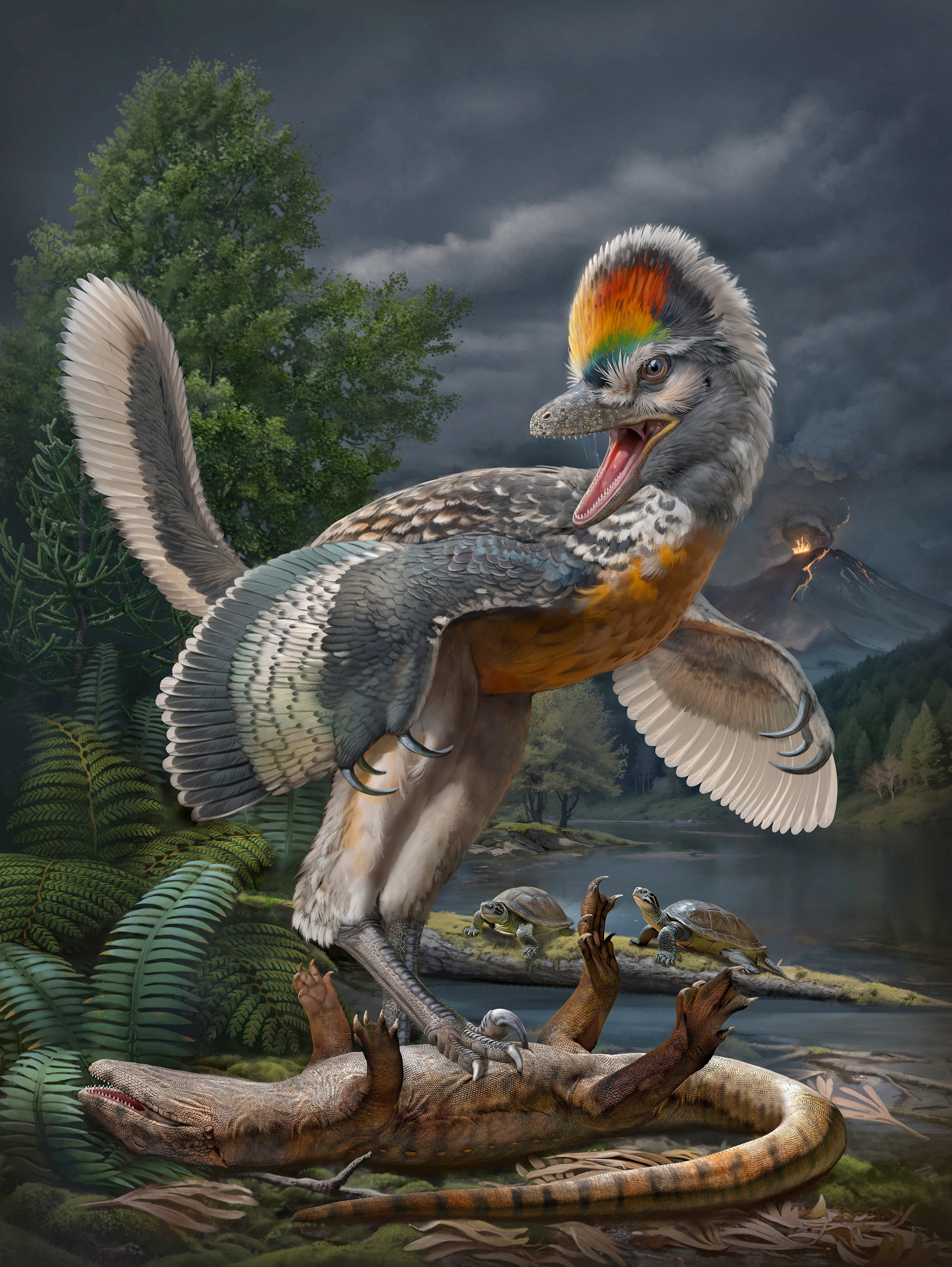About 148 to 150 million years ago, a strange pheasant-sized and bird-like dinosaur with elongated legs and arms built much like wings inhabited southeastern China, with a puzzling anatomy suggesting it either was a fast runner or lived a lifestyle like a modern wading bird.
Scientists said on Wednesday they have unearthed in Fujian Province the fossil of a Jurassic Period dinosaur they named Fujianvenator prodigiosus – a creature that sheds light on a critical evolutionary stage in the origin of birds.
‘Bizarre’ long-legged bird-like dinosaur has scientists enthralled in China
Scientists have unearthed in Fujian Province the fossil of a Jurassic Period dinosaur named Fujianvenator prodigiosus.
The question of whether the Fujianvenator, with its curious mixture of skeletal features, should be classified as a bird depends on how one defines a bird, according to study leader Min Wang, a paleontologist at the Institute of Vertebrate Paleontology and Paleoanthropology of the Chinese Academy of Sciences.
Asked for a word to describe Fujianvenator, Wang replied, “I would say ‘bizarre’.
- Fujianvenator is far from similar to any modern birds.”
A remarkable event in dinosaur evolution came when small feathered two-legged dinosaurs from a lineage known as theropods gave rise to birds late in the Jurassic, with the oldest-known bird – Archaeopteryx – dating to roughly 150 million years ago in Germany.
Fujianvenator is a member of a grouping called avialans that includes all birds and their closest non-avian dinosaur relatives, Wang said.
- Despite their modest beginnings, birds survived the asteroid strike 66 million years ago that doomed their non-avian dinosaur comrades.
Runner or flyer?
- The Fujianvenator fossil, discovered last October, is fairly complete but lacks the animal’s skull and parts of its feet, making it hard to interpret its diet and lifestyle.
- Fujianvenator’s lower leg bone – the tibia – was twice as long as its thigh bone – the femur. Such dimensions are unique among theropods, a group that includes all the meat-eating dinosaurs such as Tyrannosaurus and various others. It also had a long, bony tail.
“The fossil itself does not preserve feathers. However, its closest relatives and nearly all the known avialan theropods have feathers, and feathers are widely distributed among dinosaurs. Therefore, it would not be a surprise if Fujianvenator had feathers,” Wang added.
SOURCE: REUTERS
__________________________________________________________________________________







No comments:
Post a Comment